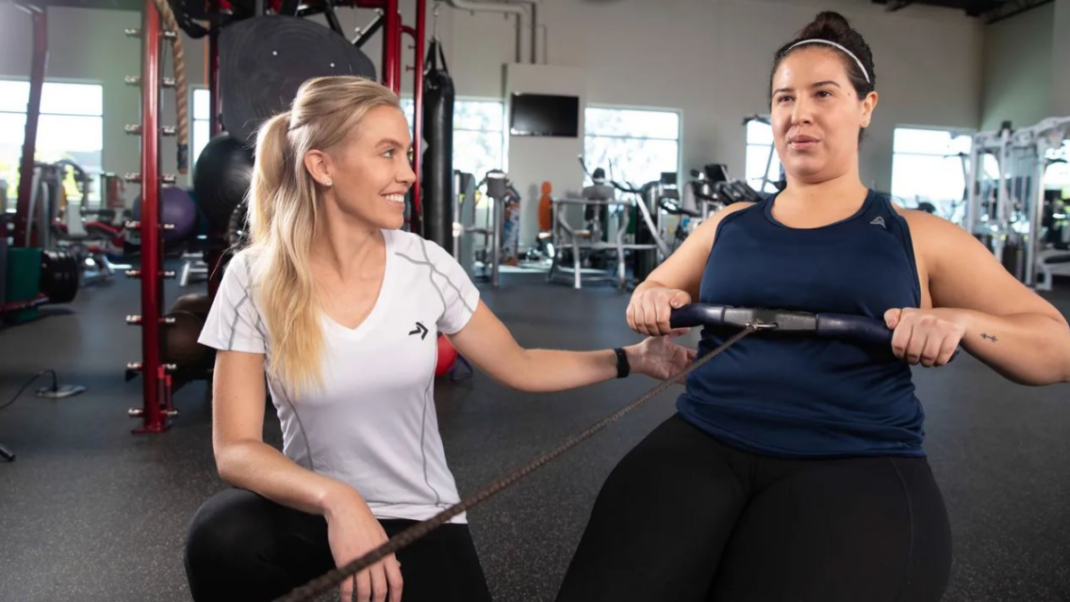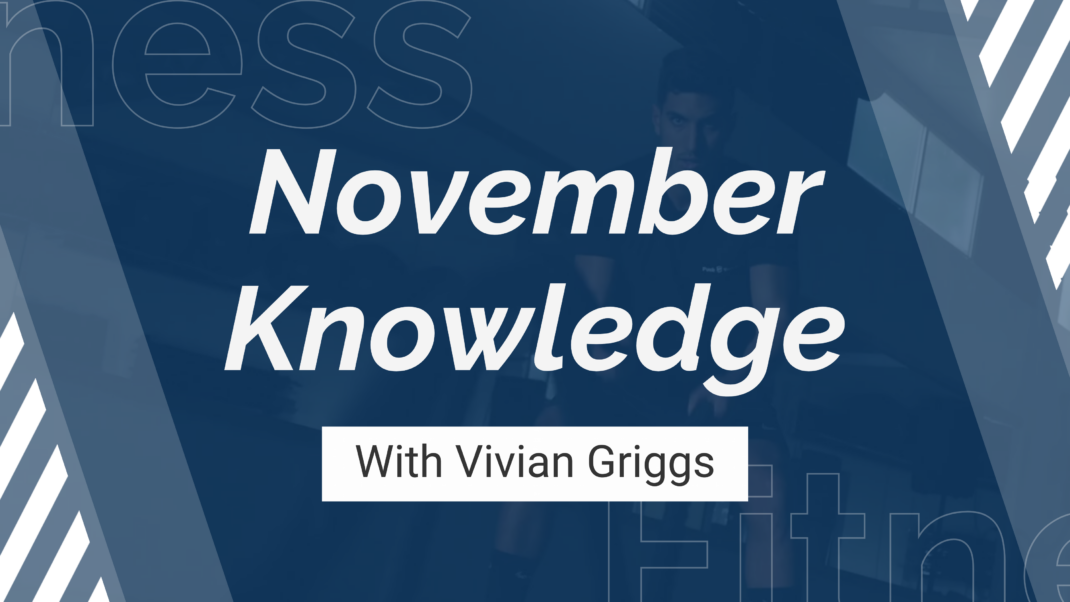Think Like an Athlete
Applying the principles of athletic training in your daily life just might provide the focus you need to succeed.

Today’s athletes have all the resources
needed to perform their best. Many college
campuses are outfitted with athletic
complexes that provide all the necessary
staff and “stuff”: the right atmosphere, an
appropriate learning space, the best training
equipment and the latest technology,
as well as skilled nutritionists and tutors.
A built-in support system defines practice
days and hours, study periods and time
off. Athletes rarely have to think about
what to do next; their schedule is determined
for them.
I vividly remember my high-school
days, when I played volleyball and basketball,
then decided to sacrifice them
both to be on the dance team. Those days
were some of the most exciting and physically
demanding ones of my life. My
teammates and I danced until we
thought our bodies would fall apart. But
we were fabulous. We practiced, practiced,
practiced—hearing the broken
record of “Do it one more time” from our
sponsor. To a great extent, I credit those
years as an athlete for the discipline, endurance,
time-management skills and
drive I have today.
The life of an athlete is demanding
and focused, and the rewards are many.
But what about your life? Without a
coach or sponsor to guide your steps, how
do you figure out where to go next? What
do you want to do, and how do you do it?
How do you pace yourself? How do you
lay out a plan to achieve the life and
career you want?
Learning to apply athletic training
principles in your life can provide the
focus and purpose you need to achieve
your present and future dreams. Taking
the following three steps can help you
come out a winner:
1. Identify specific performance goals.
2. Design a tailored program.
3. Apply proven training methods.
Identify Specific Performance Goals
Motivating people to do what is needed in
order to achieve what is desired is the
most challenging coaching job of all—even if the one you are coaching is yourself!
For athletes to maintain motivation,
they must see a purpose to their training
strategy. So the first step in thinking like
an athlete is to identify your needs and
specific performance goals—and to make
sure the program you are following
matches those goals.
Four of the performance goals athletes
typically aspire to achieve are endurance,
strength, power and flexibility, all of which
are necessary in life as well as in sports.
Endurance. Endurance provides the
ability to withstand hardship, such as long
work days and sleepless nights. It allows
you to stay focused when you’re exhausted
and to put one foot in front of
the other when you’re weighed down by
problems beyond your control.
Do you tend to flit from one goal or
job to another, thinking, “This one will
make me happy,” when what you really
need is staying power? Endurance requires
patience, character and faith, and
can be developed only through practice,
focus and discipline. Endurance is a worthy
goal to strive for.
Strength. What area of your life is in
need of some strength? Perhaps it is your
marriage, your relationship with your
teenage child or ill parent, your career as a
coach or trainer (learning to challenge
clients, uphold policies, etc.)? To build
strength, you must practice strength-building
activities: get enough sleep; schedule
downtime; work on your goals; and build
your confidence by learning new skills.
Power. What circumstances in your
life require you to have power? You undoubtedly
need to exert control, authority
or influence over others from time to
time.Do the people in your life view you
as powerful? Is someone causing you to
feel powerless? Choose activities and
actions that will develop your personal
sense of power, such as taking charge of a
volunteer project or fundraiser in your
community, or taking lessons to master a
new skill.
Flexibility. Any athlete knows that lack
of flexibility can lead to physical injury. In
a similar way, inflexibility in life can lead
to other types of injury (hurt feelings,
damaged relationships, anger and aggression),
in addition to limited performance.
Do you suffer from any of the following
causes of inflexibility: tunnel vision, or
the inability to see all your options; an
overcrowded schedule; too many commitments;
poor boundaries (letting work
creep into personal time and vice versa);
and sheer exhaustion? If so, what can you
do to stretch yourself?
Design a Tailored Program
The second step in thinking like an athlete
is to use the data you’ve collected
about needs and performance goals to
create a tailored training program. But
remember, program design is a dynamic
process. As needs and performance
goals change over time, so must
the program. An athlete who is not continually challenged with greater or
varying demands will become stale and
burned out. The same is true in life.
You must choose the appropriate stimuli
to challenge and motivate you,
while avoiding burnout.
The principles involved in creating a
tailored training program for an athlete
include frequency, intensity, duration and
recovery. How do these principles apply
to your life and career? Your choices
about them affect your health and staying
power. Too much of any one training element
can be detrimental to your longterm
goals.
Frequency. How frequently should
you train or coach the same client to get
the best results? Too much contact can
create dependence or the “tired-of-seeing-each-other” blues. How often do you
need or want to invest in continuing education
to stay current and motivated?
On the personal side, how often
would you like to see family and friends?
How many days per week should you be
faithfully implementing your own training
program?
Intensity. When planning your week,
month and year, you need to evaluate
how your load varies (or doesn’t vary).
I’ve learned to look at my month from a
global perspective. I vary my client load,
and I plan for when I need a day or a week
off. If I work too intensely for too long,
I risk getting exhausted and apathetic.
Duration. How much time do you
need to spend working on your performance
goals in each area of your life?
Carve out the necessary time. For example,
for each week, I schedule 3 hours of
cardiovascular exercise, three 45-minute
sessions of strength training, 20 client
hours, and 10 hours to work on my business.
The rest of my hours are for me and
my family.
Recovery. To stay fresh, you need adequate
downtime. Plan open time in your
day, schedule occasional long weekends
and take as many adventuresome or restful
vacations as you need. Like your muscles,
your spirit will not grow without
adequate recovery.
Apply Proven Training Methods
The final step in creating a plan to achieve
your goals is to apply proven training
methods to avoid wasting time. You need
more than a simple desire—you must
have a “will do” attitude.
In the realm of athletics, proven
training methods include overload,
progression and specificity. In life as in
sports, targeted preparation that utilizes
these methods is vital to success.
Overload. Continually challenge yourself,
working beyond your comfort zone
to grow as an individual, a coach and a
trainer. Adversity builds character and
confidence. Push yourself to learn new
skills and elevate your reputation.
Progression. Strive to get better—not
just older! Vary the demands, commitments
and projects in your life so you
continue to progress rather than getting
bored and stale.
Specificity. We have all heard the
saying, “If you keep doing the same
thing, you’ll keep getting the same results.”
Do you like the results you are
reaping? If not, get specific about how
you spend your time. Choose activities
specific to your performance goals. For
example, if you want more clients,
spend more time marketing.
A Winning Game Plan
Thinking like an athlete requires you to
organize, plan and focus on your specific
life goals. Great athletes have a natural
ability and are often good at many sports.
Yet they realize that to become hall-of-famers,
they must choose one sport and
devote all their focus, time, energy and resources
to mastering it. They identify
their passion and put their will behind it.
The journey of life requires the same
careful choices. You can’t have it all, so
have what matters most to you. Identify
your performance goals, design a tailored
plan and apply proven training
methods. Instead of drifting through life,
act on your goals.Will to be different.
Live like an athlete.
endurance: the capacity to continue
a physical performance over an
extended period of time
strength: the amount of muscular
force that can be exerted against
resistance
power: a combination of strength and
speed applied over a short period of
time (as in plyometric drills)
flexibility: the ability of a joint to
move around its full range of motion
Program Variables
frequency: the exact number of
times a program is to be executed
intensity: the weight or overload
necessary to promote the desired
improvement
duration: the length of each training
session
recovery: the appropriate rest period
for the energy system being overloaded—
between sets, workouts
and program changes
Proven Training Methods
overload: loading the muscle beyond
its normal capacity to promote
muscle growth and increase
strength
progression: continually altering the
stimulus by changing the acute program
variables (the choice and order
of exercises, intensity, volume, etc.)
to produce long-term gains
specificity: matching the physical
conditioning program to the physical
demands of the desired sport
Kay L. Cross, MEd, ACC, CSCS, president of
Cross Coaching & Wellness in Fort Worth,
Texas, is a certified business and personal
coach, an IDEA Master Personal Fitness
Trainer and a motivational speaker. She can
be reached at www.kaycross.com.





